Admittedly you probably haven’t lost your saddle unless you’re a particularly skilled hoarder. That being said, I have quite the storage problem in my tack room as shown above. Currently, there is a couch in the middle of the tack room/storage shed which makes it quite difficult to move the saddles around. I am in the process of building a new shed specifically to store tack and fencing equipment on our farm so I was curious what a better solution might be.
As one of the most expensive pieces of equipment we own for riding, it is important to take the time to properly store our saddles. If stored correctly they will not only retain their beauty but last for years, possibly generations, to come.
With this in mind, I thought it was important to dig in and do a little research to ensure that I was storing my investment properly. Turns out my current “sawhorse stack” method really wasn’t that good for my saddles. Go figure!
How improper storage can ruin your saddle.
While we may like to sit down when we’re not working the opposite can be said or our saddles. Saddles are primarily made from leather and we know that leather can be a bit brittle at times. Additionally, under all of that padding and leather is a saddle tree.
This tree is effectively the bones of your saddle. Over time without proper support, the tree can actually be bent out of proper shape. Things like leaving your saddle resting on its horn or even not using the appropriate saddle rack can lead to your saddle being misshapen over time.
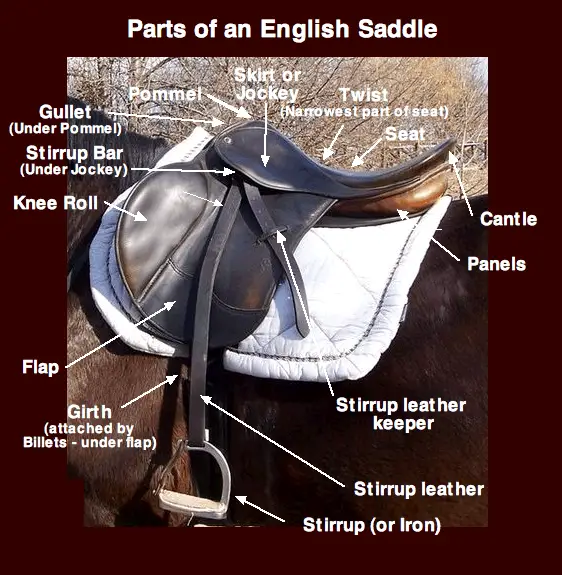
For example, English saddles have leather panels, bottom padding, usually stuffed with wool, a synthetic filling, or foam. Due to this, it is important to spread out the weight of the saddle. Over time, the panels of the saddle can be squished where the saddle rack and saddle meet. This, in turn, can cause saddle sores and a general lack of comfort for your horse.
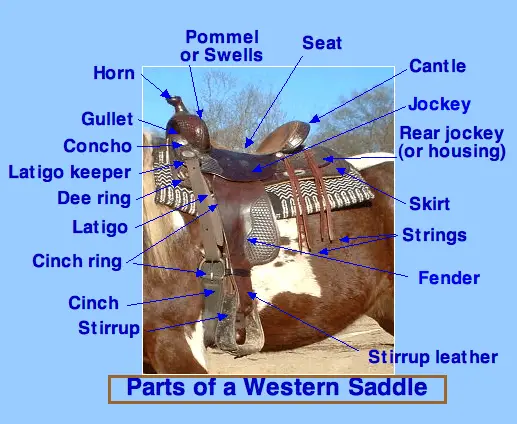
Western saddles, however, generally have a fleece lining. After a long ride, this lining can often be wet with sweat. For western saddles, it is important to use a saddle rack that allows the fleece to dry and air out to prevent mold and other grossness from infecting the saddle. In the case of a western saddle, most of the weight is going to be carried by the center or gullet. The outer skirts still need to be supported but only to retain the shape of the tree.
I reached out to the Facebook community for advice on this for western saddles. There were a ton of people suggesting this saddle rack from amazon. I think the primary reason for this was that it has a separate bar for storing your saddle pad. This way you can air out your saddle and its pad after a long ride.
Saddle leather care
While there are some saddles out there that are made out of synthetic materials, most of the saddles we own are probably made out of genuine leather. The leather on our saddles is highly susceptible to both temperature and humidity.
If at all possible try to keep your leather gear in a heated and air-conditioned building. Obviously heating and air-conditioning a large barn isn’t really the most cost-effective unless you happen to be rolling in spare cash. This is why we often see separate tack rooms walled off. This also helps to prevent dust and other airborne nastiness from interacting with our gear. If this is not possible I recommend either running a dehumidifier or a chemical dehumidifier such as this one from DampRid. This will at least help to keep the humidity-controlled.
Six tips you Probably don’t know
Wrap your cinch strap
For you fellow western riders taking the time to wrap your cinch strap, or latigo, to your saddle can save you tons of humiliation and even some bruises around the barn lot. At the very least it will save your hands from being quite as dirty.
This one is pretty simple, and I’m no knot expert. simply loop your strap around the front rigging dee leaving a tail. Use this tail to wrap horizontally around your bundle once or twice. Then, tuck the tail through the bottom of your loop.
Doing this every time instead of lazily throwing it over the top of your saddle will help to prevent your latigo from the inevitable puddle it gets dragged through or falls into.
Additionally, this helps to break away any unwanted dirt or grime on the strap as well as help to keep the strap from being too stiff and stuck in one particular shape.
Low-cost dust cover
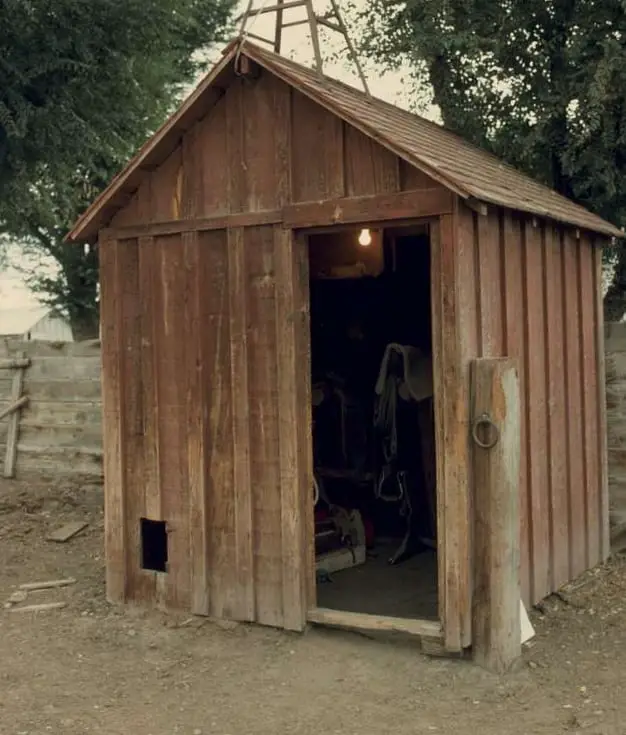
If you live out on an old dusty road as we do, you probably have some issues with dusty tack. One super low-cost solution to this can be found not in the tack shop, but in your local hardware store.
What your looking for is a plastic dropcloth. The cheaper the better! Cheaper dropcloths are usually made out of thinner plastic than their more expensive counterparts. This means that as you are walking around painting they are easier to tear. For our purpose, we won’t care too much. If you feel more comfortable with a heavier one, go ahead!
You can do one of two things using your new dropcloth. First and easiest, you can simply lay this over the top of your saddle, this will create a barrier between any dust and your nicely cleaned saddle.
Alternatively, you can use your plastic to create a “dust curtain.” Assuming your plastic will reach from floor to ceiling staple the plastic to the ceiling around the entire saddle storage area. This may take more than one dropcloth but should help to keep the larger area dust free.
If you end up using more than one dropcloth, mark one edge where they meet with some tape or a sharpy, this will be your new entrance. Likewise, if you’re only using one you can use either side or using a sharp knife cut a slit for you to slide through with your gear.
Saddle bucket
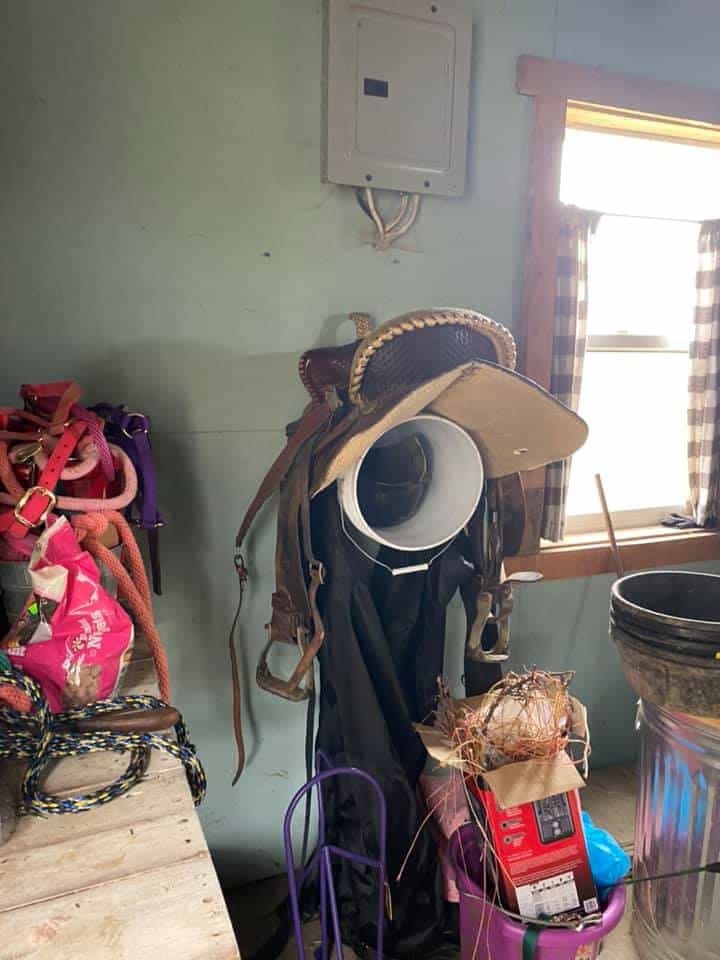
If you happen to be an English rider this tip is mostly for you; however, I have heard of a few Western riders using this as well. Your style of the saddle has one awesome benefit that western riders like myself are quite jealous of, even if we won’t admit it. Your saddles are lightweight and short!
Many English riders have posted some awesome-looking pictures of walls full of saddles on buckets; however, I wasn’t able to find anyone posting pictures of western saddles online. I reached out to a local horse community and asked if anyone had given it a go. Turns out tons of awesome people have actually done it with… some success. The longer and heavier saddles have a tendency to warp the bucket at the end and overhang quite a ways. As a way to resolve this, one person suggested using large PVC piping as it’s a bit more sturdy and can be cut to an appropriate length for your saddle. Consider adding a series of holes to the top side of this pipe to allow for airflow on your fleece.
Add some shelves
This one might seem kind of obvious. The sounds that the simple act of adding a shelf can really improve storage in the tack room. In particular, adding a shelf right next to you or a saddle storage area and help you pack up quicker get down the trail.
Add a shelf next to your saddle rack filled with all of the things you’re going to need to prepare your horse for the ride. Try adding things like baskets with hoof picks, or brushes. Just a simple Act of having this stuff readily available will make a huge impact on how quickly you can tack up your horse.
Add some Felt.
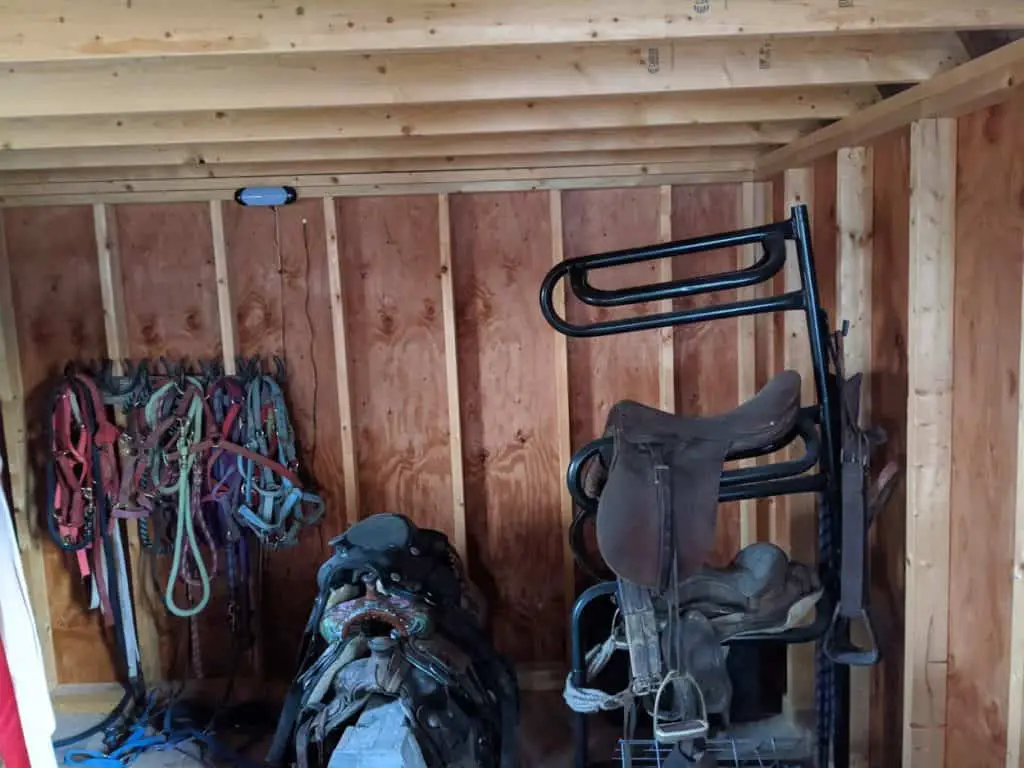
Western saddles in particular are actually quite heavy. But I find that sometimes they get hung up what’s the Saddle Rack as I tried to take them on and off.
As a solution for this, I took some hot glue and felt strips and attached them all along the tops of the bars of the rack. This not only gave the saddle something a little bit softer to sit on which can’t hurt but I felt dramatically increased the easiness of storing and un-storing my saddles. Give it a try and shoot me an email I’d love to hear what you think.
Horn Out
This is another quick tip around storing and un-storing your saddles. I always try to store my Saddles horn out. Might just be a personal preference can I find it’s a ton easier to pull the saddle off of the rack when I am able to grab the horn instead of the back skirt. This is pretty easy to do it doesn’t really require much explanation but I found that I was able to get in this habit over the course of a week or so of riding.
Saddle Pad Storage
In order to protect our saddle pads, it is important that they are properly put away. I don’t know how many saddle pads of mine have been damaged by some rodent. Or how many times a saddle blanket has a bit of an odd smell when I go to use it.
In my neck of the woods, we often see the humidity in the 90th percentile and temperatures upwards of 100°F. This heat and humidity combo coupled with the exertion of lugging my oversized rear-end around leads to an awfully gross saddle pad after a long trail ride. With this in mind, it’s important to understand how to store our pads so that they can properly air out.
The main thing here is to ensure that your saddle pads have plenty of air moving around them. A lot of people build their own saddle racks out of dimensional Lumber found at any hardware store. I have also seen other designs that are built out of PVC pipe or even black iron pipe.
Do not stack your saddle blanket on top of your saddle or under your saddle as you will not be giving it any air to breathe. Likewise, try to not stack your saddle pads.
It is very important to keep your saddle pads clean from dirt and debris. I like to give them a good shake or thorough cleaning after each ride. Saddle pads with dirt and other gunk can cause more sores and lack of comfort for the horse. If you are interested in more instructions on cleaning saddle pads I have a full post on just that topic, Can Saddle Pads Be Washed?
Securing your saddles.
Personally, I don’t worry so much about this aside from keeping the tack shed locked with a deadbolt, this is really the easiest way to secure your saddles. But I own my own property and I’m out in the middle of know where. How can you secure your saddles if you share a barn with other riders?
Talk with your barn manager about security. Suggest adding an electronic locking system so that only people that should be in the tack room have access. You can also suggest adding a security camera system, if you get together with some of the other riders in the barn you may be able to split the cost of such improvements so that all of your gear can remain safe.
If the barn manager outright refuses to help with the matter you still have a few options available. Consider building a tack box like the one pictured below. If you’re lucky you can wheel this monster into your barn lock it up tight and be worry-free going forward.
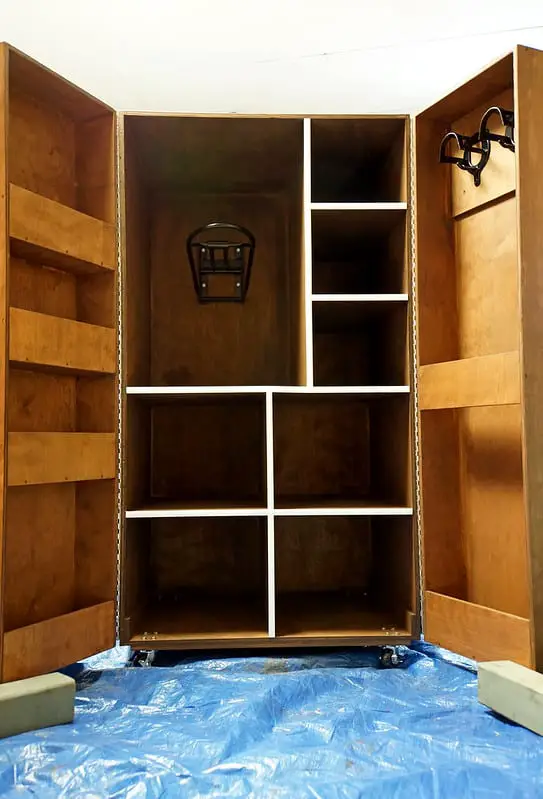
If that pesky barn manager won’t let you bring one of these behemoths into their barn you can try to build a smaller version to keep in your car, but this exposes your tack to a wide variety of hot/cold and other security issues.
Western riders can secure their saddles directly to most metal saddle racks by simply passing a bike lock through the seat of the saddle or even the front rigging dee. This will ensure that nobody without your consent will be able to “borrow” your saddle. I suggest getting a bike lock with a long cable and a combination over a key such as this one from MasterLock. The long cable will allow you to pass through multiple saddles with one lock. And the combination will help you avoid driving all the way to the barn only to realize you don’t have the key for your saddle!
